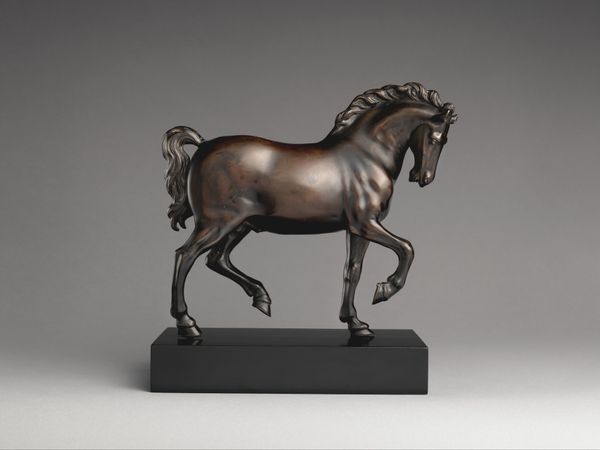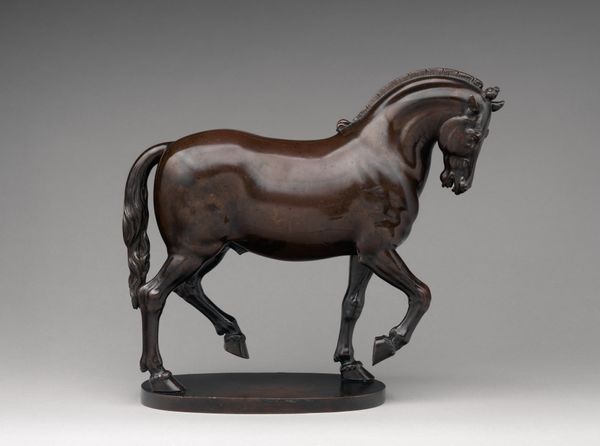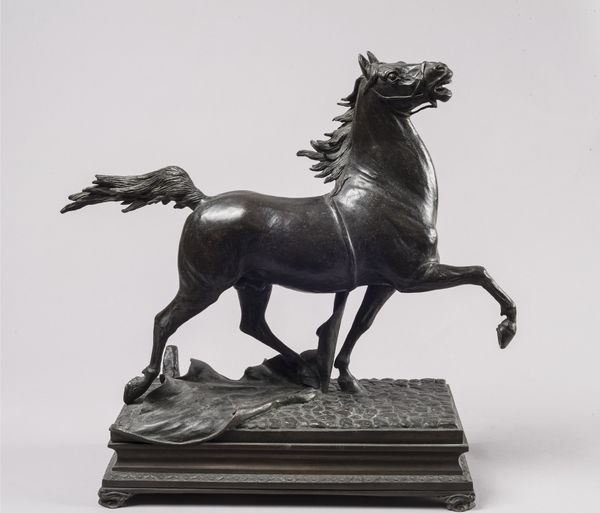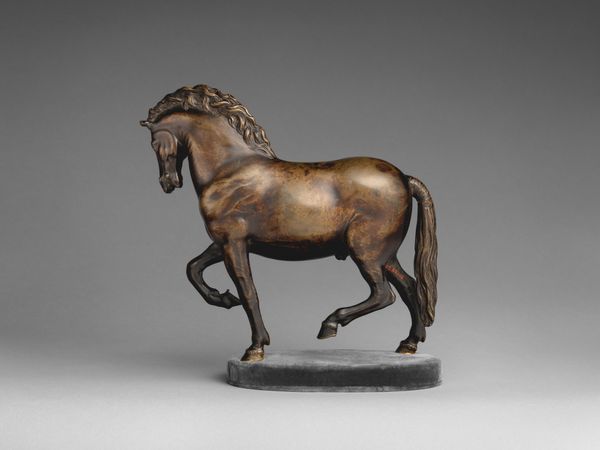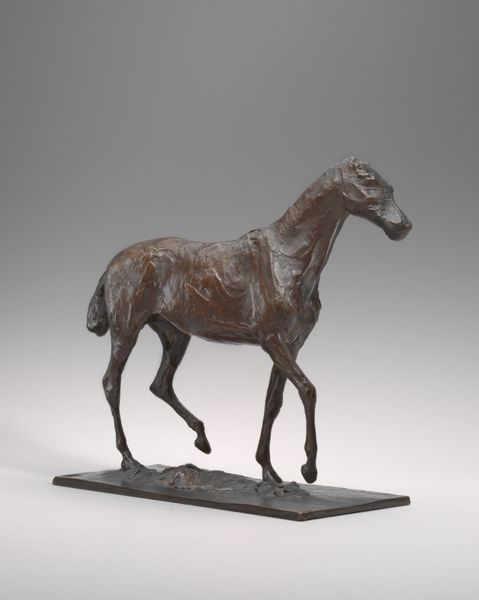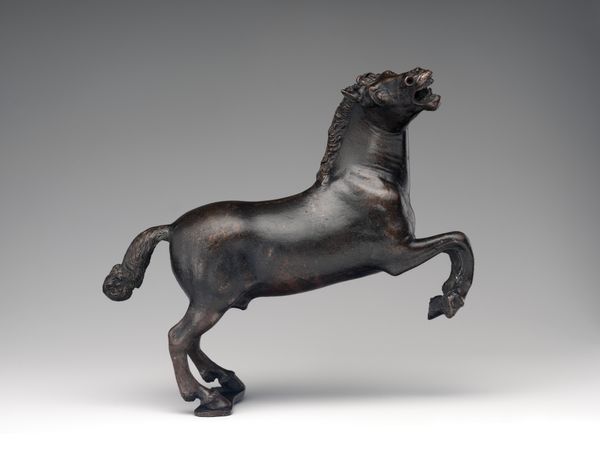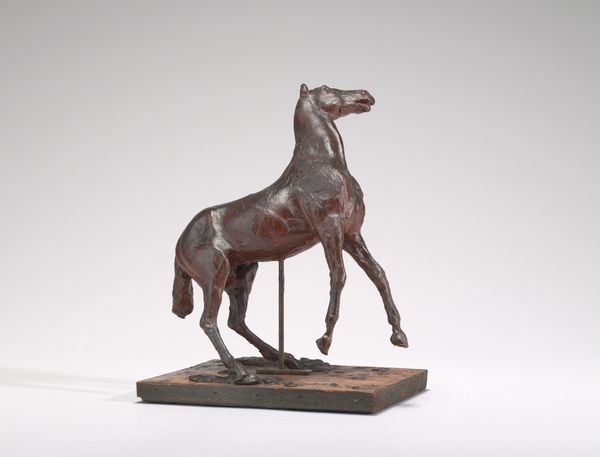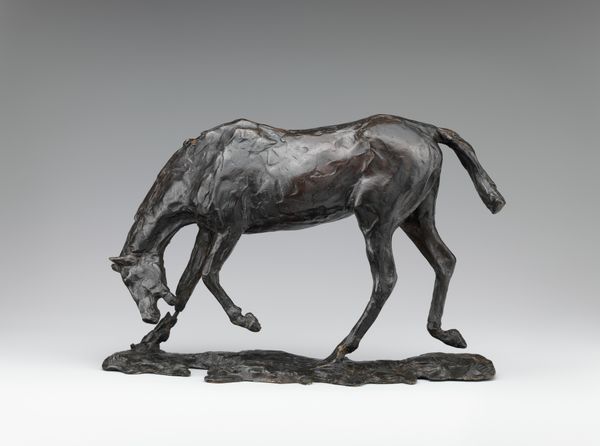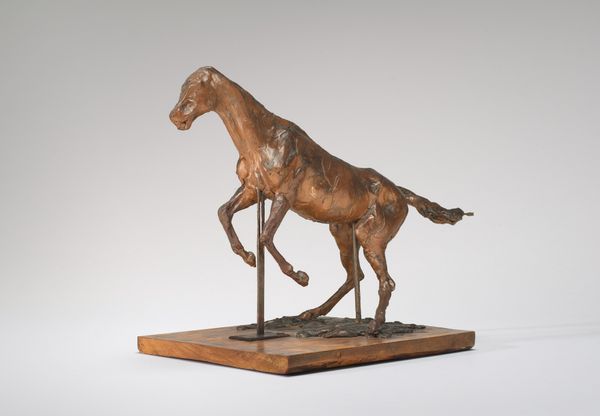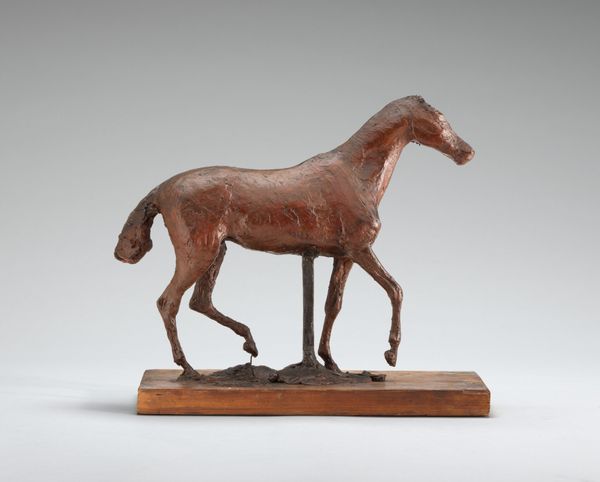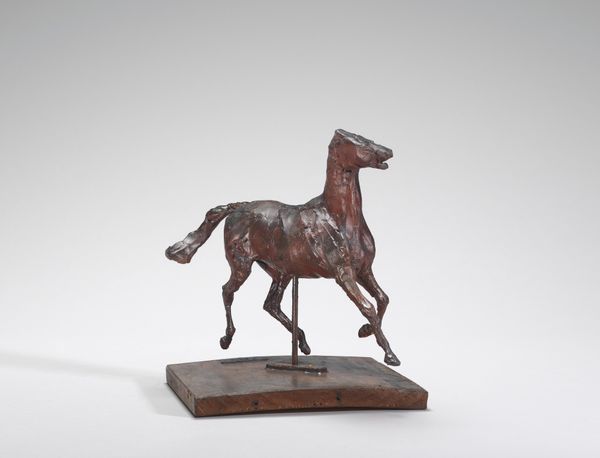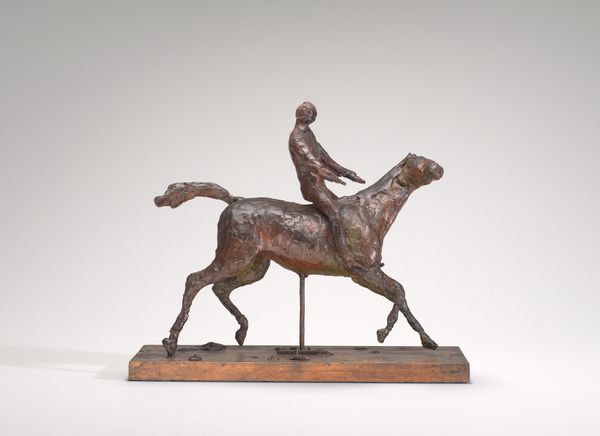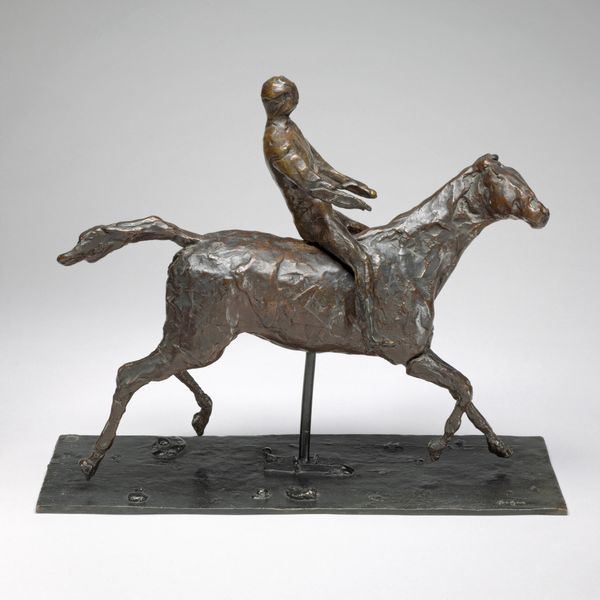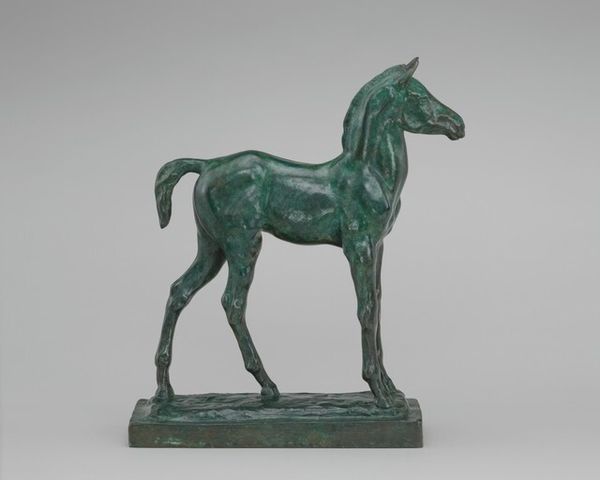
bronze, sculpture
#
baroque
#
animal
#
sculpture
#
bronze
#
figuration
#
form
#
sculpture
#
horse
#
decorative-art
Dimensions: Overall (confirmed): 5 × 7 7/8 × 2 7/8 in. (12.7 × 20 × 7.3 cm)
Copyright: Public Domain
Editor: So, here we have Francesco Fanelli’s bronze sculpture, "Galloping Horse," created sometime between 1650 and 1699. It’s surprisingly small but captures this intense sense of movement. How do you interpret this work? Curator: For me, it’s vital to situate this dynamic piece within its socio-historical context. The Baroque era was a period defined by absolutism and courtly spectacle, and animals, especially horses, frequently embodied power, nobility and control. How might this sculpture be reinforcing those ideas? Editor: I suppose a powerful horse would represent the powerful person who owns it. It's definitely idealized. Do you think there's any subversion going on? Curator: That’s a very insightful question! While it reinforces certain status quo ideals, this sculpture also embodies a kind of performative masculinity that was prominent then. Think of the artist crafting this miniature bronze for wealthy patrons; they were invested in presenting a powerful image to the world, almost like a theatrical display. Does knowing this change how you see the "Galloping Horse"? Editor: Definitely. It adds a layer of... insecurity, maybe? This emphasis on power can mask vulnerabilities, as though Fanelli is commenting on these gender roles, this masculine performance. The intensity becomes less impressive and more anxious. Curator: Precisely. The scale, material, and subject of "Galloping Horse" all point to a culture deeply invested in visual signifiers of power and status, signifiers often complicated by internal tensions. It asks us to critically engage with both the historical and contemporary meanings of such representations. Editor: It’s amazing to consider how so much can be communicated, even critiqued, in a single sculpture. Curator: Exactly! The intersection of art and cultural history helps reveal these complexities, pushing us to see art as an active participant in societal discourse.
Comments
No comments
Be the first to comment and join the conversation on the ultimate creative platform.
